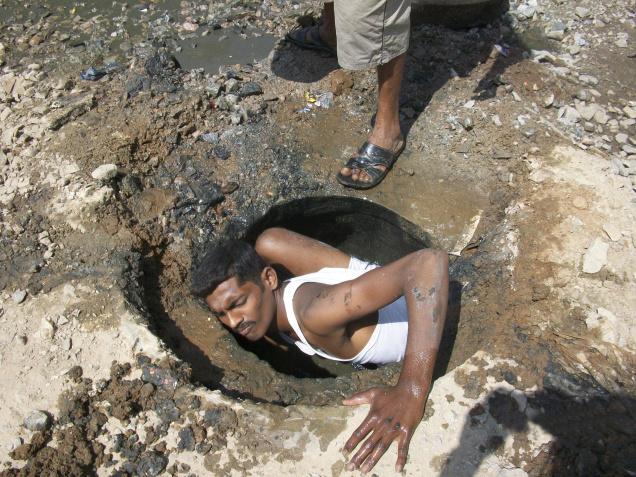Bangalore, November 10: Activists of Dalit Bahujan Movement (DBM) were in for a shock on Thursday when they spotted three migrant labourers from Gulbarga manually cleaning a sewage line opposite the satellite bus-stand on Mysore Road.
“Not only were there no sucking-and-jetting machines in sight, but the workers, who told us they were on contract, were not even wearing gloves or gumboots, which is the minimal safety equipment,” said Venkatesh of DBM. He pointed out that the Bangalore Water Supply and Sewerage Board (BWSSB) has assured the Karnataka High Court that manual cleaning of sewage lines would be stopped.
Petition to CM
The organisation will submit petitions to the Chief Minister, Social Welfare Minister and the Governor on Monday, along with a video of the incident, demanding action against the BWSSB officials concerned.
Incidentally, just on Friday, the Chief Minister pulled up civic authorities on the continued manual cleaning of sewage lines and manholes and said that every ward should have a jetting-and-sucking machine.
T. Venkataraju, engineer-in-chief (maintenance), of BWSSB claimed that manual cleaning of sanitary lines was “reduced by 80 per cent”, and as per the Chief Minister’s direction, the board would be purchasing more machines. “We currently have 119 machines,” he said, adding that manual work was done only when a manhole needed to repaired or when solid substance, like a stone, has to be removed.
‘Not isolated’
However, according to T.K. Dayanand, urban researcher at the National Law School of India University, the Mysore Road case is not an isolated one. “I have recorded 13 such cases, all in the central parts of the city, in the last six months,” he said. “One such case was at a stone’s throw from Kumara Krupa, close to the residence of several ministers.”
According to BWSSB’s ‘Safety manual for construction and maintenance of UGD lines and septic tanks in the limits of urban local bodies’, published in June 2012, the board has laid 3,600 kilometres of various diameter pipelines and constructed about 1.25 lakh manholes to facilitate the maintenance of sewerage system in the core area of the city alone.
The safety manual says that cleaning, clearing of silt and rehabilitation of sewer lines should be mechanised and must “minimise human intervention”. It goes on to say that every urban local body has an “overall responsibility of health and safety of all the workers engaged at the work site”.

